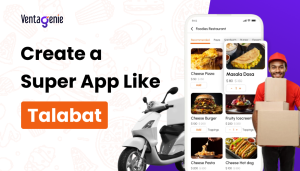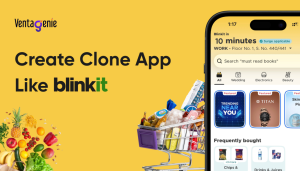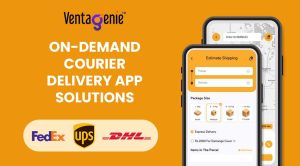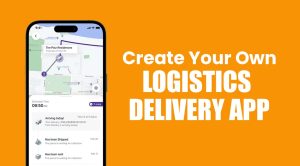How to Build a Logistics Delivery App Like FedEx, UPS or DHL for the US Market
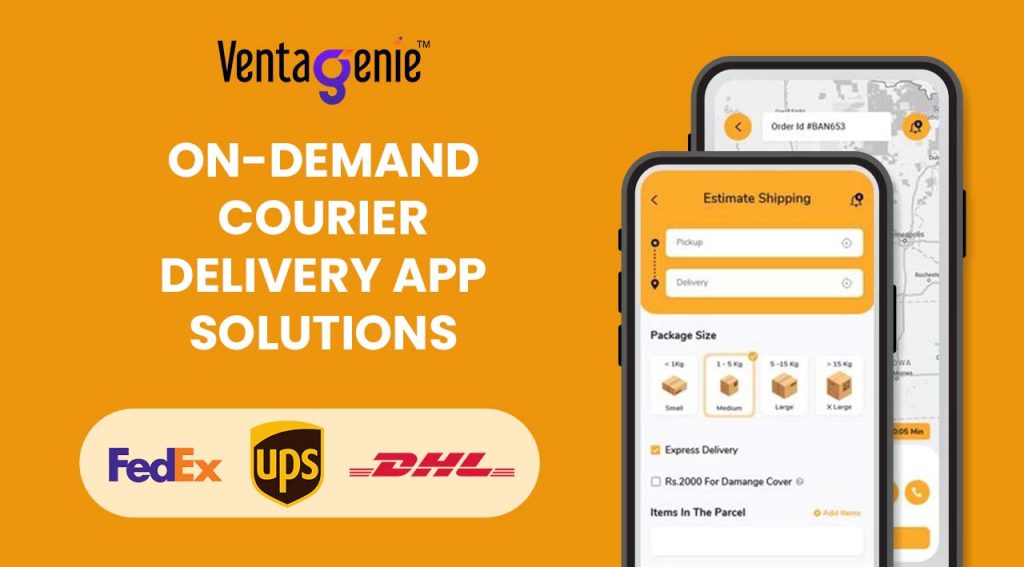
The U.S. logistics industry is booming. With e-commerce growth, on-demand deliveries, and rising customer expectations, businesses need robust courier and package tracking apps to stay competitive. If you want to create a package tracking app like FedEx or UPS, or build an on-demand courier delivery app like DHL, Ventagenie’s delivery app development solutions can help you launch a platform that boosts efficiency, delights customers, and drives revenue.
This guide explores the success stories of FedEx, UPS, DHL, and other U.S. delivery leaders, highlights must-have features, explains legal considerations, and reveals monetization strategies to help you succeed in the U.S. logistics market.
Highlights
- Build a courier delivery app like FedEx, UPS, or DHL for the U.S. market.
- Aggregator platforms like DoorDash Drive or Uber Freight charge high fees and take control away from you.
- Learn U.S. legal requirements: FMCSA, CCPA, insurance.
- Monetization: delivery fees, subscriptions, dynamic pricing.
- Discover why FedEx, UPS, DHL, USPS & Amazon Logistics lead the industry.
- Ventagenie offers on-demand delivery app development solutions for U.S. businesses.
Why FedEx, UPS, and DHL Became Leaders in Logistics
FedEx: Innovation and Speed
- Founded: 1973, Memphis, TN by Frederick W. Smith.
- Key Innovation: Overnight delivery with the hub-and-spoke model.
- Why Customers Love It: Real-time tracking, flexible options, and reliable performance.
UPS: Reliability and Nationwide Reach
- Founded: 1907, Seattle, WA by James E. Casey and Claude Ryan
- Key Growth: Expanded from bicycles to UPS Airlines and Next Day Air Service
- Why Customers Love It: Predictable delivery times, excellent customer service, transparent tracking
DHL: Global Reach and Cross-Border Expertise
- Founded: 1969, San Francisco by Adrian Dalsey, Larry Hillblom, and Robert Lynn
- Key Innovation: Fast international express shipping, customs clearance expertise
- Why Customers Love It: Global coverage in 220+ countries, reliable cross-border tracking, and strong B2B services
- Did You Know?
- FedEx and UPS deliver millions of packages daily in the U.S.
- DHL handles international deliveries faster than most U.S. carriers thanks to its customs network.
- Together, these companies shape how Americans expect speed, reliability, and transparency from courier apps.
Other Popular Logistics & Courier Companies with Delivery Apps
Beyond FedEx, UPS, and DHL, several U.S. players also offer strong delivery apps:
- USPS (United States Postal Service): Trusted nationwide, with package tracking and delivery scheduling.
- Amazon Logistics: Provides real-time tracking, driver location updates, and proof of delivery photos.
- XPO Logistics: Specializes in freight and last-mile deliveries with digital booking tools.
These competitors set benchmarks for features your courier app must include to succeed in the U.S.

What are the Key Features of U.S.-Focused Courier Delivery App
To build a courier delivery app like FedEx or create a package tracking app like UPS, include features that satisfy U.S. customers and businesses:
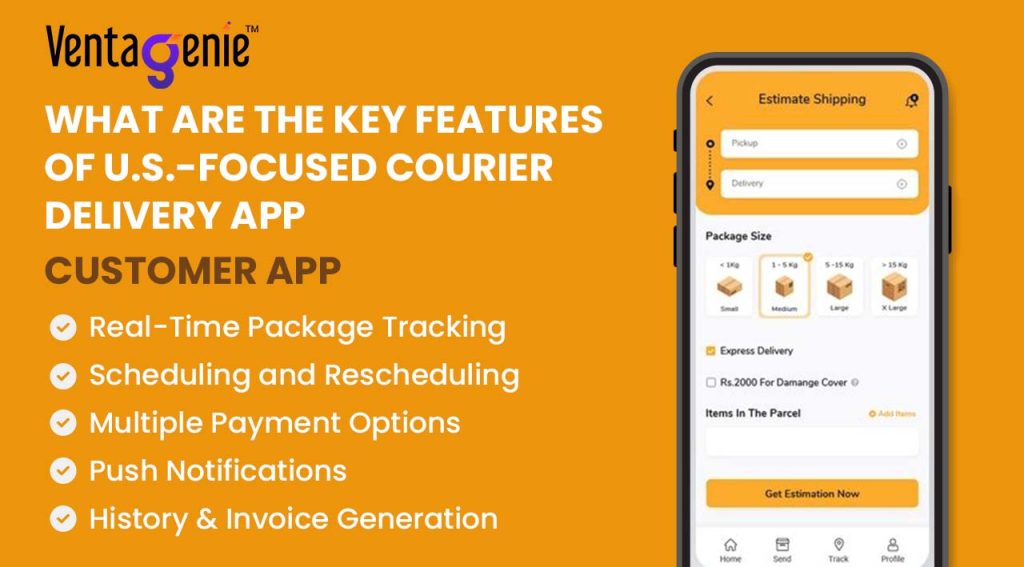
Customer App Features
- Real-Time Package Tracking with maps and delivery updates
- Scheduling and Rescheduling for convenient delivery times
- Multiple Payment Options: Credit cards, PayPal, Apple Pay
- History & Invoice Generation for easy record-keeping
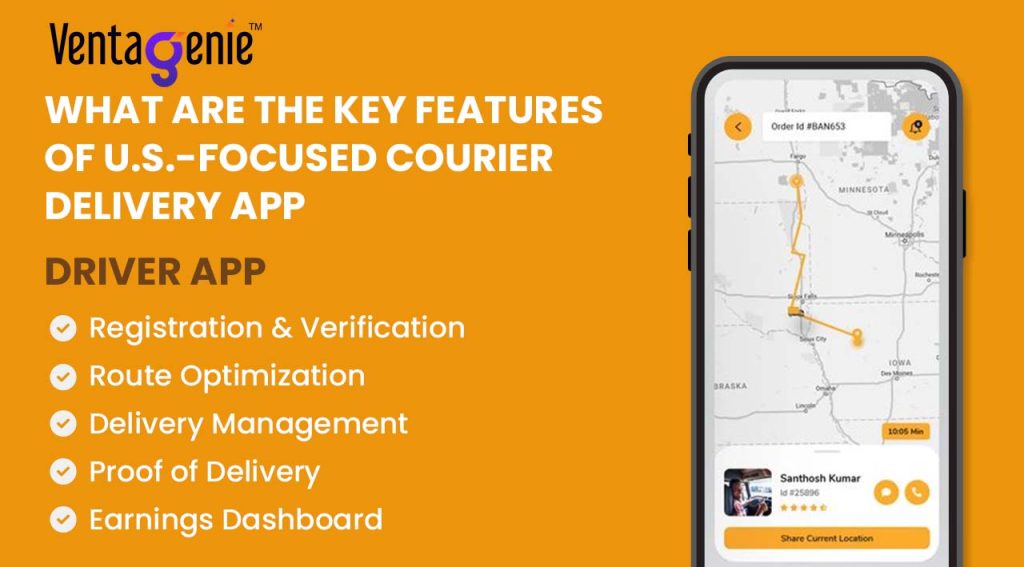
Driver App Features
- Registration & Verification to ensure qualified drivers
- Route Optimization to save time and reduce costs
- Delivery Management: Accept or complete tasks efficiently
- Proof of Delivery via photo or signature
- Earnings Dashboard to track income transparently
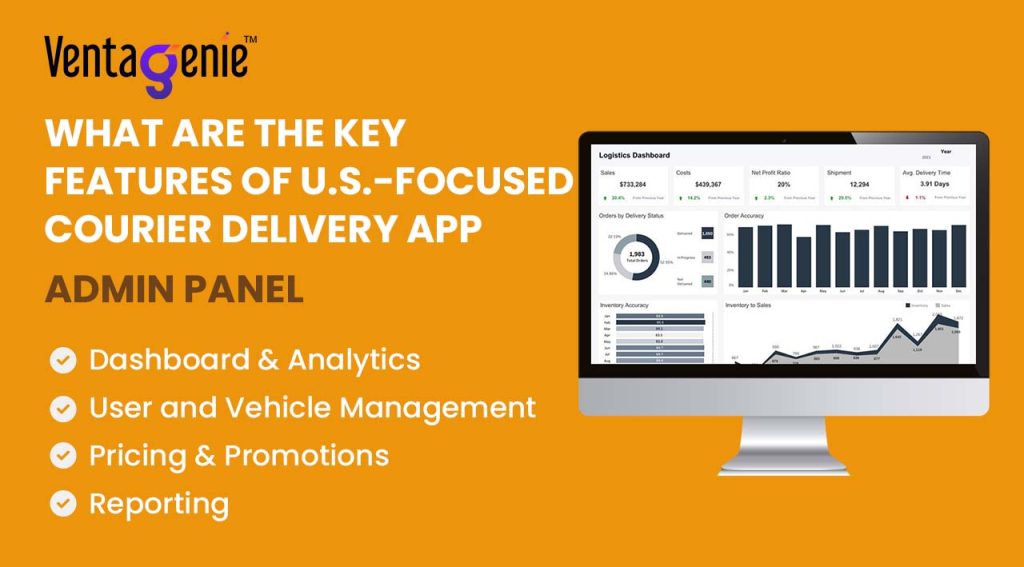
Admin Panel Features
- Dashboard & Analytics to monitor drivers and shipments
- User and Vehicle Management for operational efficiency
- Pricing & Promotions to adjust charges or offer discounts
- Reporting for actionable business insights
Logistics delivery app solution
Top 5 High-Demand Features Every U.S. Logistics Delivery App Needs in 2025
Step-by-Step Guide to Building Your App for the U.S. Market
- Conduct Market Research – Identify gaps in U.S. logistics and analyze competitors like FedEx, UPS, and regional courier companies.
- Define Unique Selling Points – Highlight what makes your app better or faster for U.S. businesses.
- Select Technology Stack – Use React Native or Flutter for mobile apps, Node.js or Django for backend, PostgreSQL or MongoDB for databases, and integrate Google Maps API and Stripe/PayPal.
- Design UI/UX – Make navigation intuitive and mobile-friendly.
- Develop and Test – Conduct rigorous QA to ensure smooth performance across devices.
- Launch & Promote – SEO-optimized website, Google Ads, social media campaigns targeting U.S. courier companies.
- Maintenance & Updates – Regularly enhance features, security, and performance.
Legal and Compliance Considerations in the U.S.
Operating a courier or logistics app in the U.S. requires strict adherence to laws and regulations:
- Business Registration: Form LLC or Corporation depending on your business structure.
- Federal & State Shipping Laws: Follow regulations set by FMCSA (Federal Motor Carrier Safety Administration).
- Insurance Requirements: Coverage for goods in transit, liability, and driver protection.
- Data Privacy Compliance: Ensure compliance with CCPA (California Consumer Privacy Act) for handling U.S. customer data.
- Carrier Agreements: If integrating with USPS, UPS, or FedEx, ensure contracts and API usage comply with their terms.
Monetization Strategies for U.S. Delivery Apps
- Delivery Fees: Per distance, weight, or urgency
- Subscription Plans: Offer monthly or annual packages for businesses
- Dynamic Pricing: Charge higher rates during peak times
- Third-Party Logistics Partnerships: Expand your service offering
- In-App Advertising: Promote relevant products or services
- Did You Know? U.S. Logistics Facts
- The U.S. courier industry generates over $75 billion annually
- More than 9 million Americans work in logistics and freight
- The U.S. moves over 10 billion tons of freight annually
These insights highlight the scale and potential of building a delivery app for the U.S. market.
Logistics delivery app solution
Why You Should Build a White-Label Logistics App for Your Courier Business
Conclusion
Developing a package tracking app like FedEx, UPS or DHLfor U.S. businesses requires strategic planning, robust features, compliance with local laws, and a user-friendly design. By learning from industry leaders, integrating customer-preferred features, and leveraging Ventagenie’s delivery app development solution, you can launch a logistics app that drives growth, improves delivery efficiency, and delights your U.S. customers.
Frequently Asked Questions (FAQs)
Costs range starts from $2499 to $ 50,000 full-featured apps. Ventagenie offers custom delivery app development solutions for your budget and needs.
Real-time tracking, flexible scheduling, multiple payments, push notifications, and reliable delivery.
Yes! Ventagenie specializes in on-demand courier delivery apps for small and medium U.S. businesses.
Typically 1–6 months, depending on features. Ventagenie ensures fast development with high-quality testing.
Features like route optimization, driver tracking, and automated notifications reduce delays and improve customer satisfaction.
Mr. Aniket D is a seasoned digital marketer with over 10 years of experience in market research, content strategy, and performance marketing.
He specializes in analyzing consumer behavior, identifying emerging market trends, and translating insights into actionable digital strategies.
His work focuses on blending research-driven content with SEO and lead generation to drive measurable business growth.
Known for his data-first mindset, Aniket helps brands make smarter, audience-focused decisions in competitive markets.
